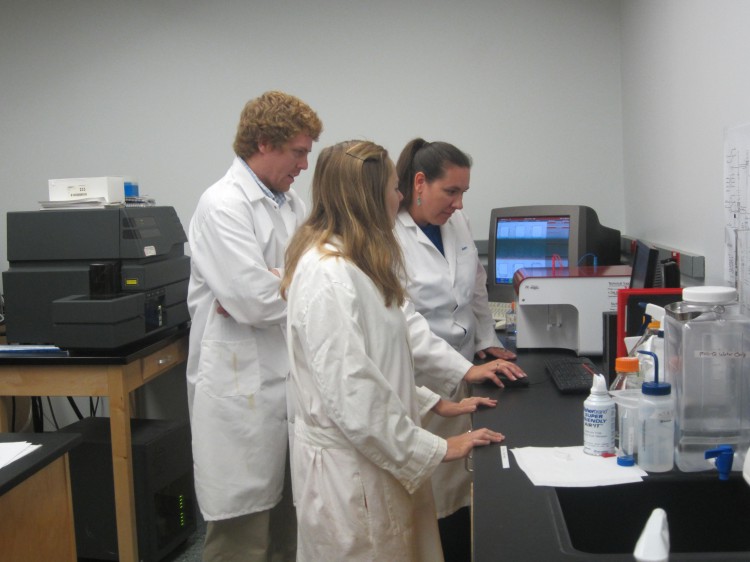Earlier this month, NCCOS researchers provided a visiting scientist from Florida’s Fish and Wildlife Conservation Commission’s (FWC) Red Tide Monitoring Program training on the use of physiological biomarkers for harmful algal bloom monitoring. Coastal blooms of the microscopic alga Karenia brevis , also known as red tides, occur nearly annually in the Gulf of Mexico and can persist for many months with potential negative effects to wildlife, human health, and local economies.

The FWC monitors and tracks K. brevis blooms using traditional sampling and analyses, along with remote sensing from the Collaboration for the Prediction of Red Tides and NOAA’s Harmful Algal Bloom Forecasts. However, there is currently no simple method to determine the growth phase of a bloom that could better enable managers to forecast the longevity and impacts of a red tide.
NCCOS scientists have developed assays using fluorescent biomarkers to measure the percentage of cells actively growing, undergoing cellular stress, or experiencing cell death in a bloom patch. These biomarkers allow for near -real-time, ship-board characterization of a bloom patch. NCCOS and FWC will collaboratively test these biomarkers in the field during this year’s fall red tide season.
This technology transfer project, slated for completion in 2015, will transition the products of a ten-year research project on K. brevis functional genomics to management applications. Transfer of these NCCOS-developed tools to FWC scientists will expand the current capabilities of coastal managers to more precisely forecast the longevity and potential impacts of a Florida red tide.
For more information, contact Jeanine.Morey@noaa.gov or Fran.VanDolah@noaa.gov.
